Lower the Boom
NASA’s new supersonic X-plane won’t rattle your windows.
/https://tf-cmsv2-smithsonianmag-media.s3.amazonaws.com/filer/71/b7/71b77c63-b5c6-4aa1-80b3-19f2e5b5416e/03b_am2019_shockwavescak-f2-p2_live.jpg)
Along Seawall Boulevard in Galveston, Texas, is a strip of crab shacks, hotels, and tourist attractions that draws visitors and beachcombers. The commercial strip is noisy, but walk across the boulevard and down to the beach, below the island’s seawall, and you’ll find a sandy strip of nature abutting the Gulf of Mexico. Any residual traffic and city noise washes out into the sounds of the surf pounding this giant sandbar.
Into this soundscape last November, NASA engineers injected supersonic “thumps.” Fighter jets offshore created the softened booms that may signal a future for over-land supersonic air travel in the United States. They at least herald NASA’s newest X-plane, the X-59 QueSST. For the thumping test flights, NASA F/A-18s performed specially designed dives that created booms to mimic those that the X-59 is expected to make when it crosses the sound barrier during flight tests in 2021. Heather Maliska, NASA’s associate project manager for commercial supersonic technology, compares the F/A-18 “boomlets” to the sound of a car door shutting, heard from a dozen or so paces away. Many Galveston residents might not have heard the boomlets at all (the results of a survey are pending).
“Our airplane should be way below the threshold that people are bothered by, or they may not even hear it,” says David Richwine, NASA deputy project manager for technology on QueSST. Richwine has worked with a lot of supersonic aircraft in his 30 years with NASA, including many aerodynamic projects with the F/A-18.
“I work at Edwards Air Force Base, and I’m very accustomed to sonic booms,” Maliska says. “One of the reasons we chose Galveston is that community is not accustomed to sonic booms.”
In simple terms, sonic booms happen because aircraft moving through air are always making pressure waves, which ripple out in all directions. At speeds faster than sound, the forward-propagating waves stack up and get pushed out in a conical wake, a three-dimensional version of those coming off a motorboat traveling at full throttle. The boom is the sound made by the sudden change in pressure created by those coalescing waves.
The idea behind QueSST is to minimize one of the two major contributions to sonic boom: an aircraft’s volume. The other contributor to sonic boom, discovered by aerodynamicists in the 1950s, is lift. Volume can be distributed along a longer fuselage so that the boom forms more gradually—which is why the X-59 and other supersonic aircraft are long and pointy. Lift presents a more difficult challenge. “It is possible to eliminate the boom due to the volume, but one cannot eliminate the boom due to the lift,” says Domenic Maglieri, a retired NASA aeronautical engineer and expert on sonic booms. “Stands to reason that something must hold the aircraft up.”
The shock wave generated by the elongated X-59, according to Maglieri, is also elongated, or stretched, rising more slowly, and therefore exerting less pressure on the eardrum—sounding more muted than the whipcrack booms generated by other supersonic aircraft.
Once the X-59 begins test flights, NASA will confirm that its odd shape produces quieter booms; until then, the agency is using the F/A-18s near Galveston to begin to compile a body of sonic boom public “dosage” data to submit to the Federal Aviation Administration.
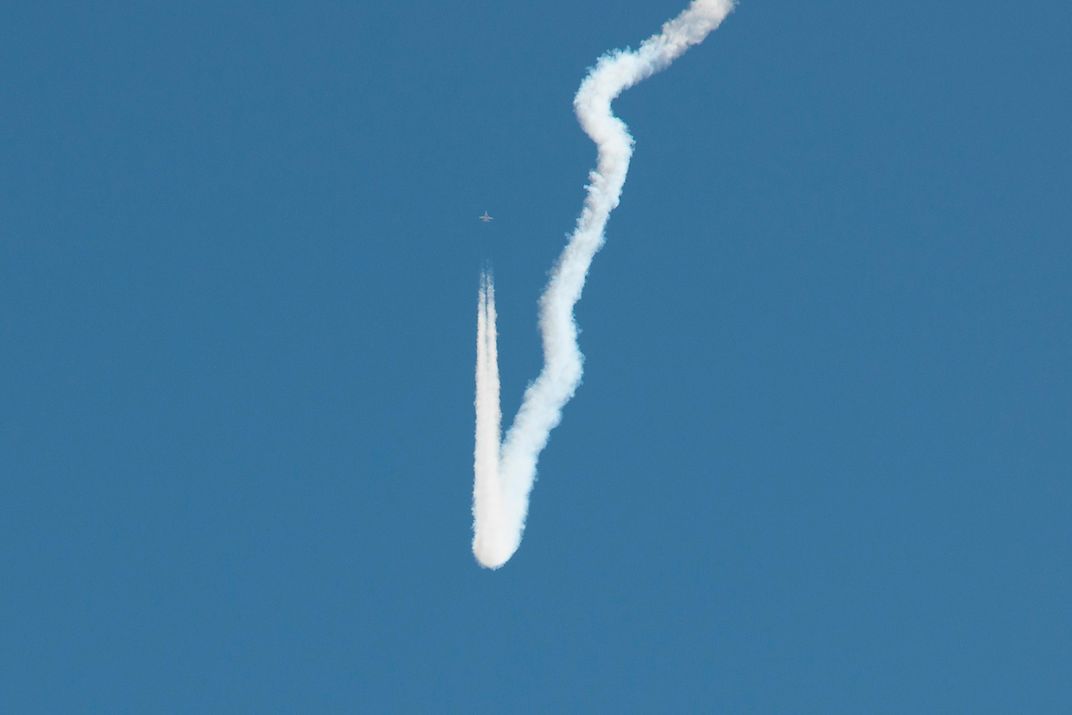
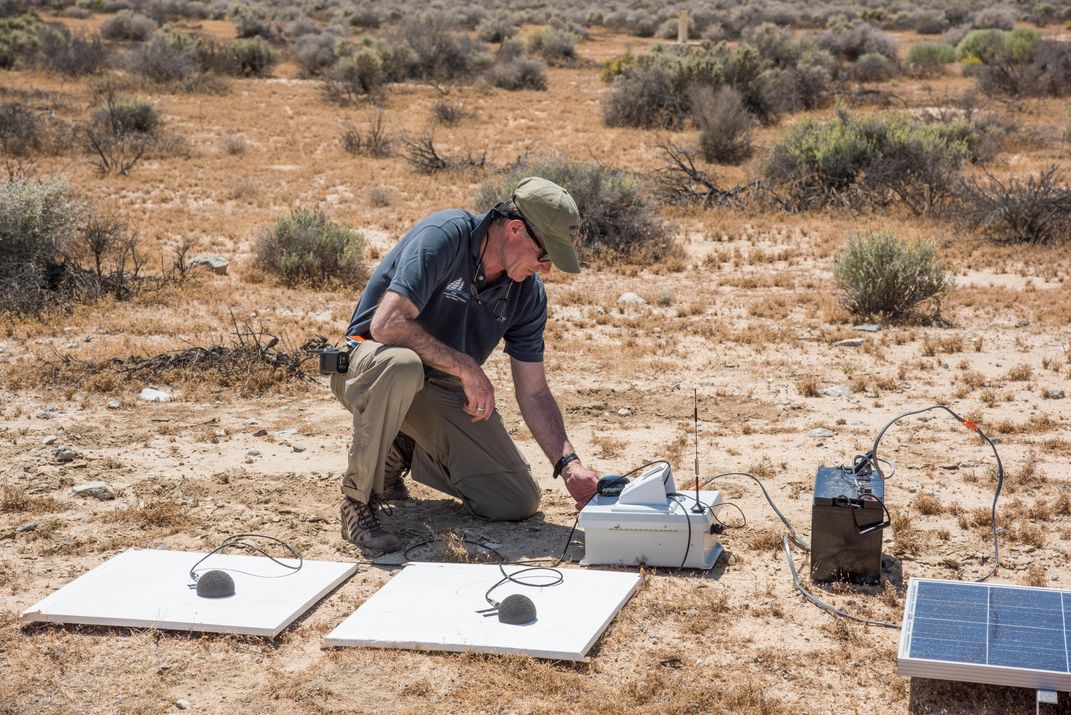
The X-59 is a NASA program, but the FAA is the organization that will rule on commercial supersonic flight over the continental United States, which it banned in 1973. The equivalent international body, the United Nations-chartered International Civil Aviation Organization, also has its own strictures against “unacceptable situations for the public…created by sonic boom from supersonic aircraft in commercial service.” Both the ICAO and the FAA will take lots of convincing to reconsider their positions, and the lobbying effort will almost certainly include the Galveston flight test results.
When a typical sonic boom is represented on a graph—of intensity versus time—it resembles the letter “N,” with a sharp initial peak receding toward normal atmospheric pressure, then an ascent to a lower peak and a descent once the sound wave passes. The boom created by NASA’s F/A-18 as it dives toward the ocean produces a more rounded, almost sinusoidal wave. The dive produces such a boom only because the flight is very carefully performed: Starting at 55,000 feet, the Hornet dives at a 53-degree angle and levels off at around 32,000 feet. During the dive, the airplane is just barely supersonic at Mach 1.15. A relatively soft sonic shock wave from the top of the aircraft will reach the warmer air near the ground, where the speed of sound is higher, and generate a rounded wave that sounds like the car-door thump Maliska described.
Acoustic engineers have developed a system for measuring sonic booms, called perceived levels of decibels, or PLdB. A decibel (dB) is a measure of pressure; PLdB is what people actually hear. When the Concorde airliner went supersonic, its window-rattling booms scored a PLdB rating of 102, equivalent, for a split second, to the high whine of a fighter engine just feet away. Those are the booms that inspired the original FAA ban. The X-59 has been designed to achieve a PLdB of 75, similar to what might be heard when standing next to a heavily trafficked road. (The numeric drop is larger than it might seem; the decibel scale is logarithmic.) In more conventional units, the Concorde’s supersonic sound waves carried a powerful maximum atmospheric overpressure of two pounds per square foot. By contrast, the X-59’s would exert 0.3 pounds per square foot on the eardrum.
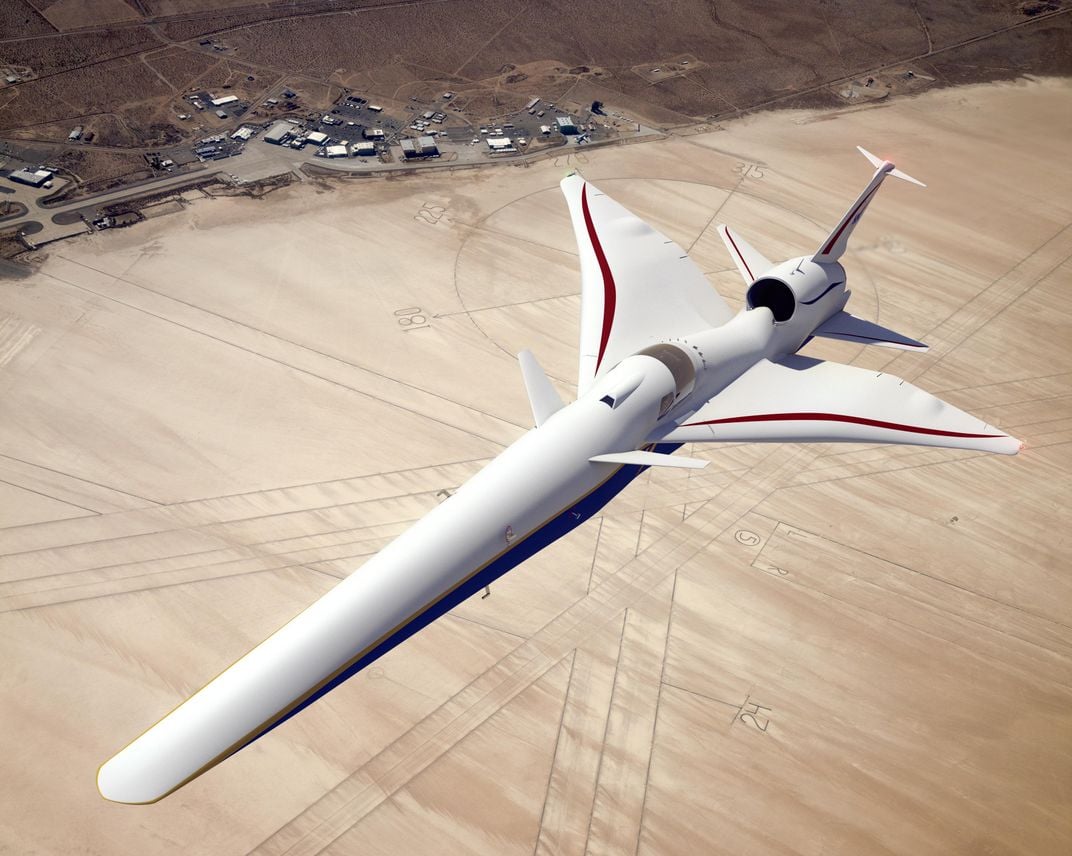
The long, thin X-59 QueSST certainly looks like an aircraft advancing new paradigms. The one-seater demonstration aircraft will be, according to manufacturer Lockheed Martin, 94 feet long with only a 29.5-foot wingspan. That makes the airplane just 16 feet shorter than a Boeing 737-700 commercial airliner but with a wingspan 6.4 feet smaller than that of a Cessna 172 Skyhawk. The short wingspan reduces drag, and the supersonic jet’s delta wing will still produce plenty of lift. But resemblance to supersonic transports past or potential is a coincidence. The X-59 will transport nothing; it is meant only to prove that booms can be smothered.
“When you look at the Lockheed airplane, you say, ‘That’s not going be a business-type supersonic, overland aircraft,’ ” Maglieri says. “It isn’t. The X-59 is what I call a ‘boom box.’ It is supposed to get up to 55,000 feet, do a cruise flight and generate a signature that’s 75 PLdB. That’s all.”
* * *
“The basic physics of mitigating sonic boom have been understood for 50 years or so,” says Mike Buonanno, Low-boom Flight Demonstrator air vehicle lead at Lockheed Martin. “They did some initial wind tunnel tests and proved that the basic theory was valid. But we did not yet have the computational horsepower or optimization techniques to make a truly low-boom airplane like we have now.”
Before computational fluid dynamics (CFD) models could fully capture the subtleties of sonic-
wave generation, engineers could not collect enough data to work on supersonic sound signatures. “Twenty years ago, we might have run a configuration where you represented [your] aircraft with a couple hundred thousand grid points,” says NASA’s David Richwine. “And now we really talk tens of millions, when we grid up an airplane to do detailed design or analysis.”
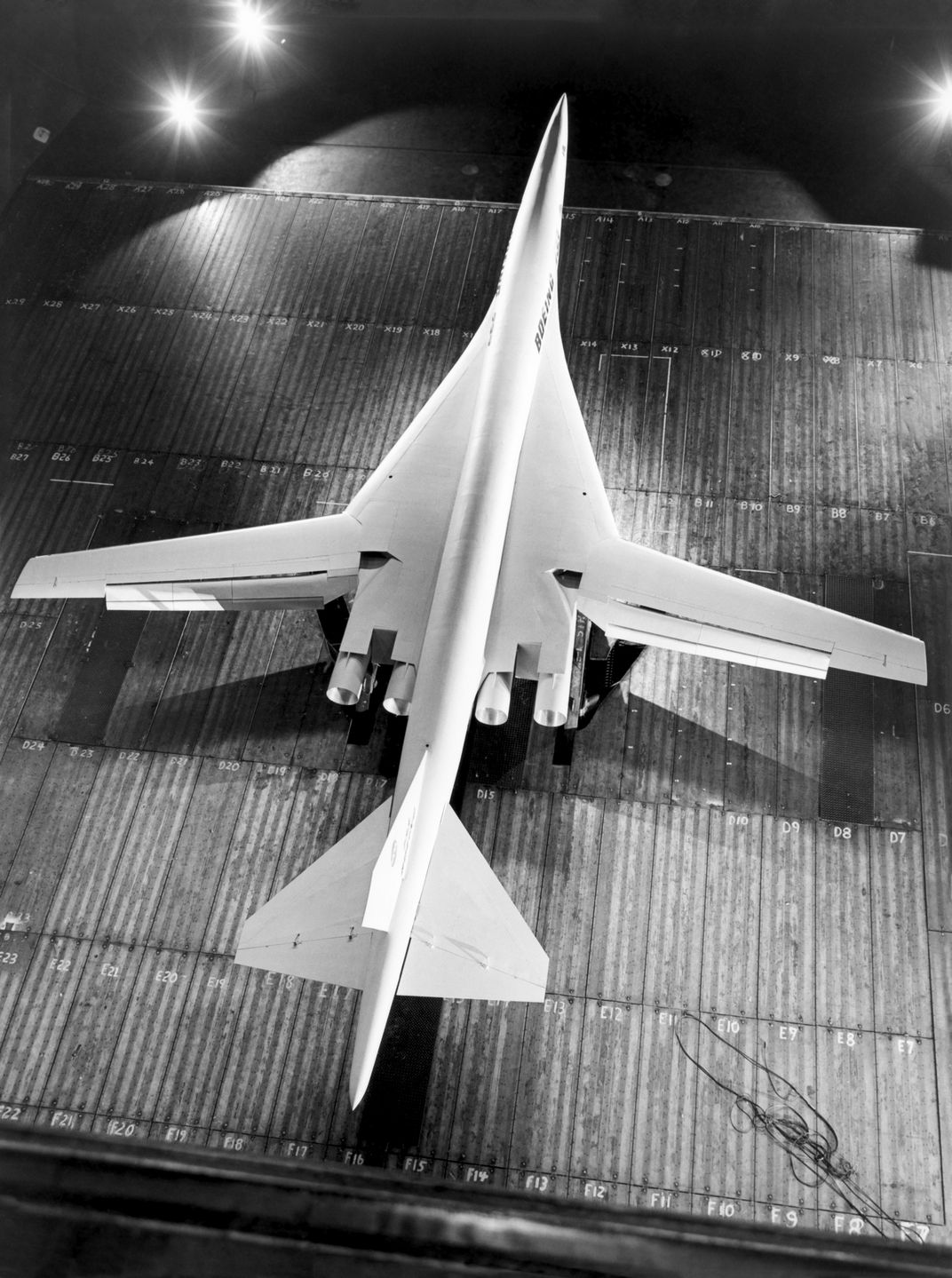
Throughout the second half of the 20th century, efforts to reduce the sonic boom were more scattershot. “The idea [at first] was if you could put all the energy of the shock into the nose shock, near the [front of the] airplane, you’d get maximum attenuation of the shock and get reduced impact on the ground,” says Peter Coen, commercial supersonic technology project manager at NASA. Engineers had arrived at this design strategy over decades of trial-and-error field tests, beginning in the 1950s.
Maglieri was part of the team in 1957 and ’58 that performed some of the earliest comprehensive sonic boom studies off Wallops Island, Virginia, using F-100 and F-101 fighter jets. In 1960 at Nellis Air Force Base, he worked on another team that investigated sonic booms as potential defensive weapons that could take out enemy missile systems. The sarcastically named “Project Little Boom” discovered that as impossible as it seemed to get rid of the booms, they conversely couldn’t be made big enough to do much damage.
“Sure we broke some windows, but we didn’t do a thing to the missile systems,” Maglieri says. “NASA flew their C-47 in, hoping that we’d break it, so they could put in for another airplane. All we did was knock down a fire extinguisher and one of the little access panels. And they had to fly the thing back. They weren’t happy.”
In the 1960s, NASA conducted detailed morphological studies of hundreds of sonic booms from a broad range of supersonic airplanes in the American fleet—XB-70s, B-58s, YF-12s, SR-71s, F-104s and F-106s—all to understand how their booms differed from one another and how they sounded to people hearing the shock waves on the ground. The National Sonic Boom Evaluation (carried out from 1965 to 1967, during the height of U.S. interest in supersonic transport) discovered what is now common knowledge: Sonic booms are perceived by the public as anywhere from bothersome to barely tolerable to utterly unacceptable.
“That was a really important milestone in the development of low-boom technology, because they demonstrated that you could modify the sonic boom and that it would persist through the atmosphere,” Lockheed’s Buonanno says.
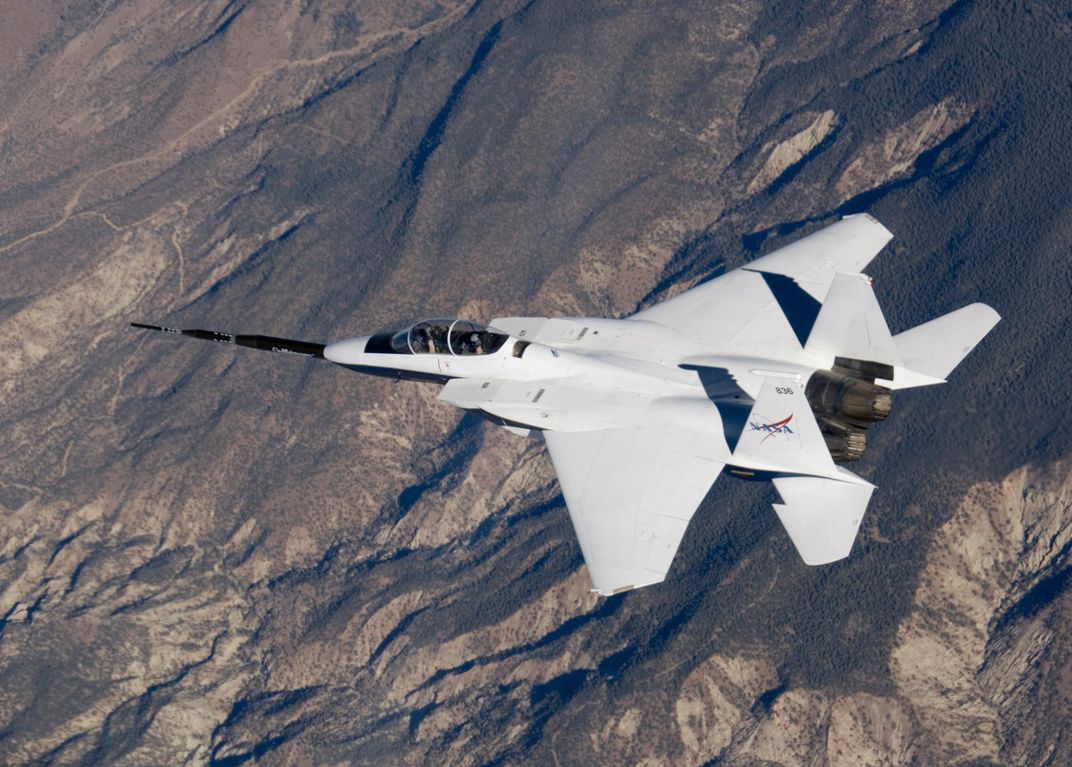
The next major step was the Shaped Sonic Boom Demonstrator, meant to do one thing only: reshape the N-wave. Designing, testing, certifying, and ultimately flying the modifications on a Navy F-5E fighter took more than a decade, but when the Demonstrator flew in 2003 it proved that shaping and quieting sonic booms are possible.
Overall, the SSBD looks much more like a conventional fighter inflated by balloon pump than the elongated X-59. “To prove persistence we did not have to shape the whole aircraft,” Maglieri says. Since the SSBD project didn’t have to meet any strict PLdB requirement, its designers didn’t optimize the craft for absolute minimum boom.
The early attempts continued at shaping a sonic boom profile like a sculptor with a piece of clay. From 2004 to 2007, NASA and Gulfstream tested what was called the Quiet Spike. The spike was a 24-foot extendable lance attached to the nose of NASA’s F-15B fighter. The idea was that the pole would stir up shock waves in advance of those generated by the airplane. Those advance shock waves were meant to ease the rise time of the main shock, minimizing the sudden jolt.
“You get a gentle distribution of the displacement of the air so that all the shock waves of the airplane are about the same strength,” says Richwine. “So they don’t coalesce into an ‘N-wave’ that gives you a sonic boom.”
Maglieri says Quiet Spike was a sea change in the field. From that point forward, he says, sonic booms were considered inherently modifiable.
* * *
SSBD and Quiet Spike had proven the concept; now it’s time to build a functional airplane. “The X-59 is all new because in order to come up with low-boom design, we need to tailor every inch of…its wind-swept surface to meet the boom criteria,” Buonanno says. For instance, he points out, Lockheed and NASA engineers test the various antennas that the aircraft will need for communications in a virtual wind tunnel to see if they adversely affect the boom profile.
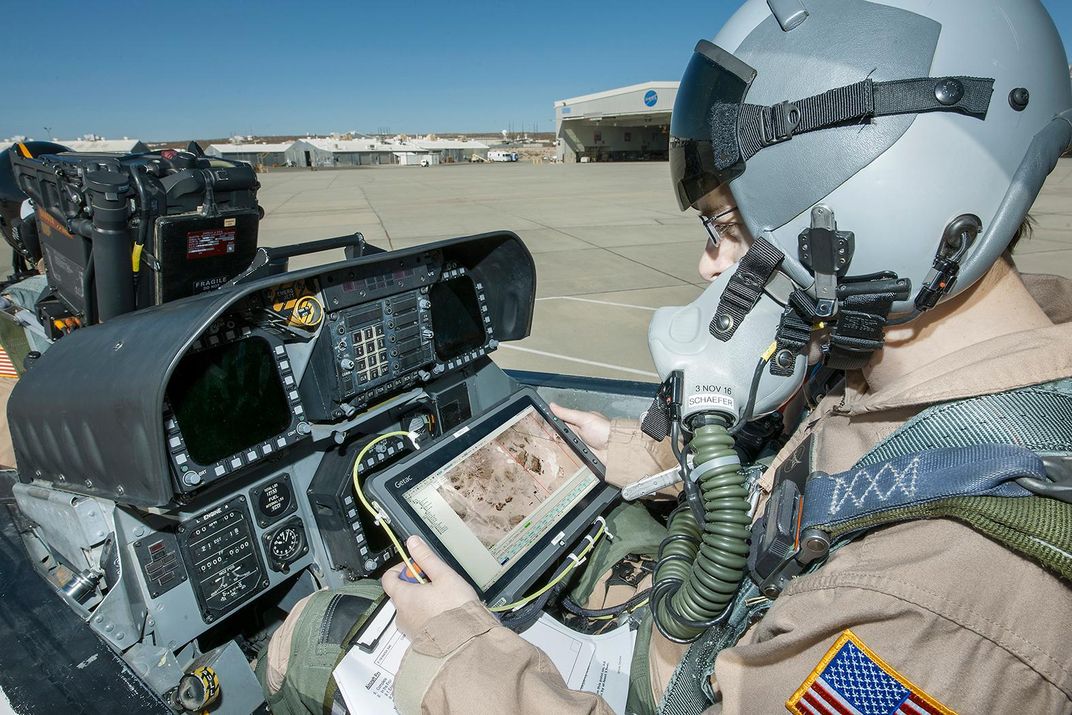
“The shape is driving every other detail of the airplane,” says Buonanno’s colleague Peter Iosifidis, Low-boom Flight Demonstrator program manager.
One way the X-59 can drive down sonic-boom intensity is to save weight, which has a direct relationship to the airplane’s displacement of air. Instead of the Concorde’s famous—and heavy— nose, which had to be mechanically lowered in order for pilots to see on takeoff and landing, the X-59 uses external vision systems.
“[That] heavy claptrap of a droop nose probably had thousands of pounds of weight penalty associated with it,” says Richwine. “We don’t have that today. We’re taking the state of the art of 4K [video] technologies and putting cameras and monitors in the cockpit that replicate that forward view.”
The X-59’s test flights will no doubt provide a greater understanding of sonic booms, but the collected data is aimed squarely at changing hearts and minds at the FAA.
“We think NASA has been very intentional and wise in their strategy for X-59,” says Buonanno. “There’s a motto that we like to have one miracle per program. And in this case NASA is focusing on getting the acoustic signature of the aircraft down and getting us to support that regulatory change effort.”
And now that the Galveston F/A-18 quiet boom tests are complete, the community-response data can be presented to the FAA and aerospace community in advance of the X-59’s first flight tests in 2021.
“Right now we’re trying to get data to take away those regulatory barriers,” Richwine says. “We’re not trying to create a commercial product. A commercial product would look significantly different.”
For starters, says Maglieri, a commercial product that didn’t have to worry about sonic booms could go well above Mach 1. The X-59’s maximum speed, at 55,000 feet cruising altitude, is Mach 1.5 (990 mph). A supersonic commercial jet may benefit from QueSST’s research, but the X-59 is not a prototype.
Whatever their Mach rating, however, commercial supersonic aircraft will face a substantial environmental backlash. Carl Pope, former executive director of the Sierra Club, wrote a New York Times op-ed last summer arguing that bringing back supersonic jets could do serious damage to the climate. “Introducing 1,000 commercial SSTs more advanced than the Concorde could make the climate impact of airlines balloon by 40 percent by midcentury,” Pope wrote. Aside from the noise of even reduced sonic booms, supersonic engines tend to be louder (the Concorde required afterburners to take off and accelerate through Mach 1). And because of the proportional relationship between air resistance and velocity, doubling an airplane’s speed requires four times the energy.
Maglieri points out that a similar energy tax is paid by aircraft designers who try to keep speeds in the transonic regime just under Mach 1, where strange aerodynamics cause huge amounts of drag. “That’s the worst regime for fuel inefficiency,” he says. “Don’t be dumb and play near the sound barrier. Cross it and be done with it.”
If the X-59 is successful, crossing the sound barrier could be as routine for airliners as crossing the country—and a lot quieter.
